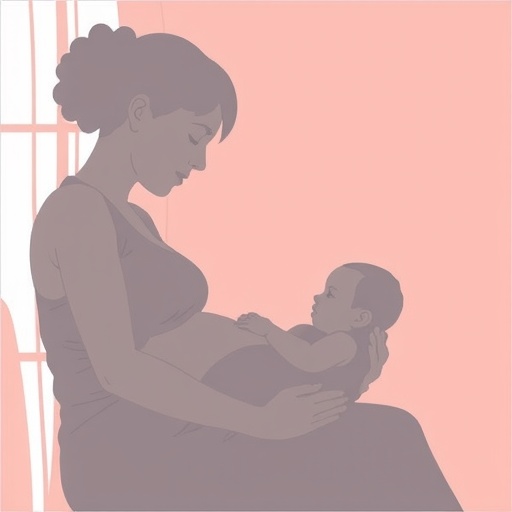Postpartum depression (PPD) stands as a significant public health concern globally, posing profound risks for maternal well-being, including potential impacts on child development and heightened suicide risk. In response to the urgent need for effective interventions, recent research has delved into the cost-effectiveness of screening strategies combined with therapeutic interventions. A study published in the forthcoming 2025 issue of BMC Psychiatry rigorously evaluates the economic and health utility outcomes of implementing a Whooley screening tool followed by cognitive behavioral therapy (CBT) versus the current standard of Treatment as Usual (TAU) in Hong Kong.
This investigation employs a sophisticated decision tree modeling approach to simulate postpartum health states, specifically delineating between depression and remission/no depression over the critical postpartum period. The model integrates comprehensive healthcare cost data from Hong Kong, quantified in Hong Kong Dollars (HKD), alongside quality-adjusted life years (QALYs), a preferred metric in health economics to capture the trade-off between quantity and quality of life. This dual-component analysis facilitates a nuanced understanding of both financial implications and health benefits inherent in early identification and intervention strategies for PPD.
Central to the study is the adoption of the Whooley questions, a brief screening instrument recommended by global health guidelines as a practical means of identifying women at risk for postpartum depression. Women who screen positive through this tool are then referred to CBT, a cognitive intervention with extensive empirical support for efficacy in mitigating depressive symptoms. By comparing this combined screening and treatment protocol against TAU, which may lack systematic screening or structured therapy referral, the authors aim to quantify potential gains in health outcomes juxtaposed with incremental costs.
The study’s base-case findings reveal that the combined strategy of Whooley screening followed by CBT referral yields an incremental gain of 0.014 QALYs per patient over TAU. Although this gain might appear modest, it represents a meaningful improvement in the context of population-level health outcomes. However, this health gain comes with an added cost of HKD 3,193.15 per patient. These results underscore a crucial trade-off: while implementing structured screening and therapy demands upfront resource allocation, the associated improvement in health-related quality of life justifies this expenditure within accepted economic thresholds.
Robustness of these findings was interrogated through extensive deterministic sensitivity analyses, which varied key input parameters such as utilities associated with both depressive and non-depressive states, as well as probabilities related to therapeutic response. Notably, the cost-effectiveness conclusions remained consistent despite parameter fluctuations, enhancing confidence in the model’s validity. Further, probabilistic sensitivity analysis illuminated a near-certain probability (100%) that the combined screening and CBT intervention surpasses TAU in cost-effectiveness at a willingness-to-pay (WTP) threshold of HKD 422,191 per QALY—an important benchmark reflecting societal willingness to invest in quality health improvements.
A particularly insightful aspect of the research stems from scenario analyses focusing on real-world factors such as patient acceptability of CBT and adherence levels. These behavioral elements proved pivotal; variations in therapy uptake and engagement significantly influenced the outcomes, highlighting that health economic projections must consider psychosocial dynamics that accompany clinical interventions. Additionally, the model incorporated treatment costs for false negatives who remained undiagnosed, reflecting a comprehensive assessment of downstream economic impacts.
The implications of these findings are twofold. Clinically, the data advocate for integrating routine Whooley screening in postpartum care pathways and establishing structured CBT referral mechanisms. From a policy perspective, the evidence supports investing in such integrated approaches within Hong Kong’s healthcare system, potentially serving as a framework translatable to other healthcare contexts confronting similar challenges with perinatal mental health management.
While the analysis is promising, the authors prudently call for further empirical research that evaluates the feasibility and real-world effectiveness of implementing these strategies at scale. Issues such as healthcare workforce capacity, patient education, and potential barriers in diverse populations warrant detailed exploration. Moreover, longitudinal data capturing long-term outcomes of early identification and therapeutic engagement remain necessary to validate sustained cost utility.
This research contributes critical knowledge to the field of perinatal psychiatry by providing a rigorous economic evaluation that aligns clinical efficacy with economic sustainability. The thoughtful integration of clinical screening, psychotherapeutic intervention, and health economic modeling exemplifies a multidisciplinary approach essential for advancing maternal mental health policy and practice in the postnatal period.
The present study’s strengths include its detailed modeling framework, use of localized cost data, and incorporation of sensitivity analyses reflecting uncertainty inherent in health economic evaluations. It sets a precedent for future investigations to consider multifaceted strategies combining screening and evidence-based treatment modalities rather than isolated initiatives.
In sum, the study powerfully advocates for proactive management of postpartum depression, leveraging a practical screening tool paired with cognitive behavioral therapy to achieve both improved maternal health outcomes and efficient use of healthcare resources. This approach represents a beacon of progress in addressing a condition with profound individual and societal ramifications.
As global health systems increasingly prioritize mental health integration within maternal care, this work provides actionable evidence underpinning strategic decision-making. Its acceptance and implementation could lead to a paradigm shift, enabling earlier identification and intervention for postpartum depression, ultimately enhancing the well-being of mothers and families worldwide.
Subject of Research: Cost-effectiveness evaluation of postpartum depression screening and treatment strategies in Hong Kong.
Article Title: Cost-utility analysis of screening and cognitive behavioral therapy compared to usual care for postpartum depression.
Article References:
Wang, B., Shen, S., Lok, K.Y. et al. Cost-utility analysis of screening and cognitive behavioral therapy compared to usual care for postpartum depression. BMC Psychiatry 25, 1017 (2025). https://doi.org/10.1186/s12888-025-07459-y
Image Credits: AI Generated




